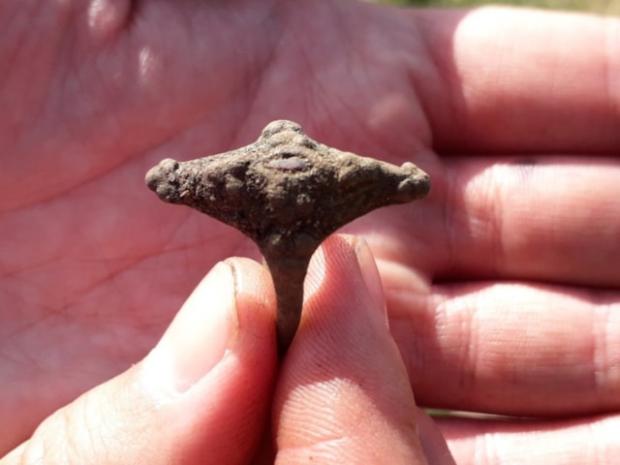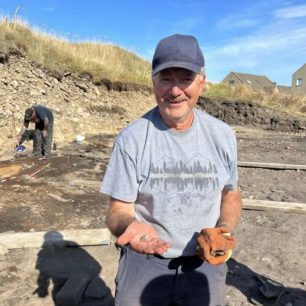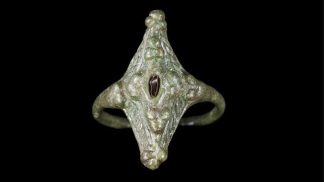Rare Pictish Ring Discovered In Excavation Of Moray Fort

A “remarkable” Pictish ring, buried for more than 1,000 years, has been discovered by a volunteer on a dig at Burghead Fort, Moray.
The discovery was made on the last day of a two-week excavation led by the University of Aberdeen.
This kite-shaped ring with a garnet or red glass centre was a unbelievable find for ‘enthusiastic amateur’ and retired engineer, John Ralph.

John Ralph couldn’t believe his luck when he uncovered the ring after two weeks on the dig. Credit: University of Aberdeen.
“It is a real thrill to dig up an artefact in the knowledge that you are probably the first person to see it for 1000-1500 years,” he told the University of Aberdeen.
Burghead Fort was a Pictish promontory fort – a defensive structure located above a steep cliff. The settlement was one of the earliest power centres within the Pictish kingdom between AD500 and AD1000.
However, the historical value of the site was assumed lost during the 1800s when the town of Burghead was built on top.

The kite-shaped ring with a garnet or red glass centre and is in almost perfect condition. Credit: University of Aberdeen.
Professor Noble led the dig and he told the University of Aberdeen: “There are very few Pictish rings which have ever been discovered and those we do know about usually come from hoards which were placed in the ground deliberately for safekeeping in some way.
“We certainly weren’t expecting to find something like this lying around the floor of what was once a house but that had appeared of low significance so, in typical fashion, we had left work on it until the final day of the dig.”
The Pictish ring found in Moray is now with the National Museum of Scotland’s Post-excavation Service for analysis.
Researchers hope that the jewellery along with other artefacts recovered from the dig will help piece together the lost history of Burghead Fort and the Pictish kingdom as a whole.





